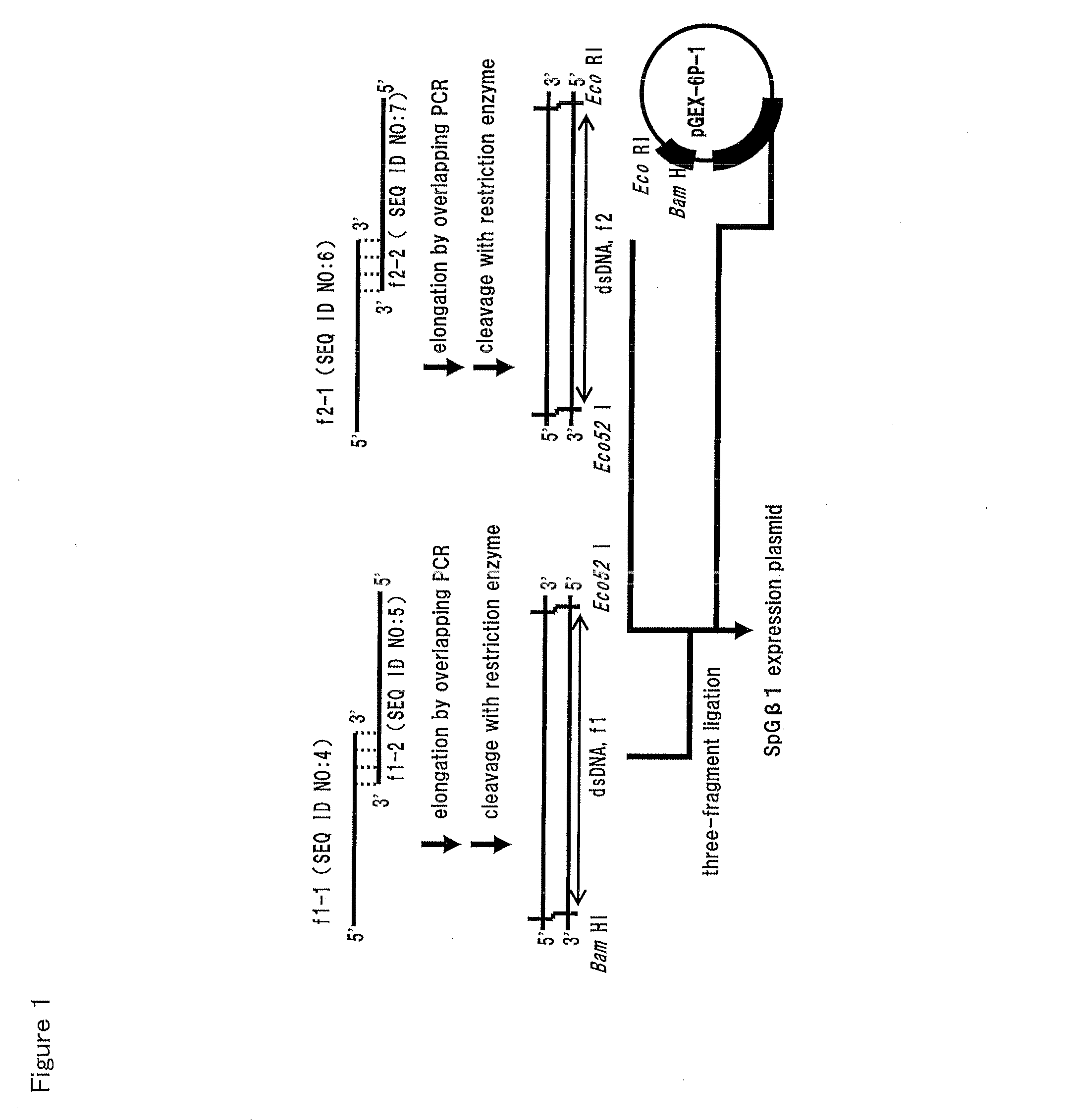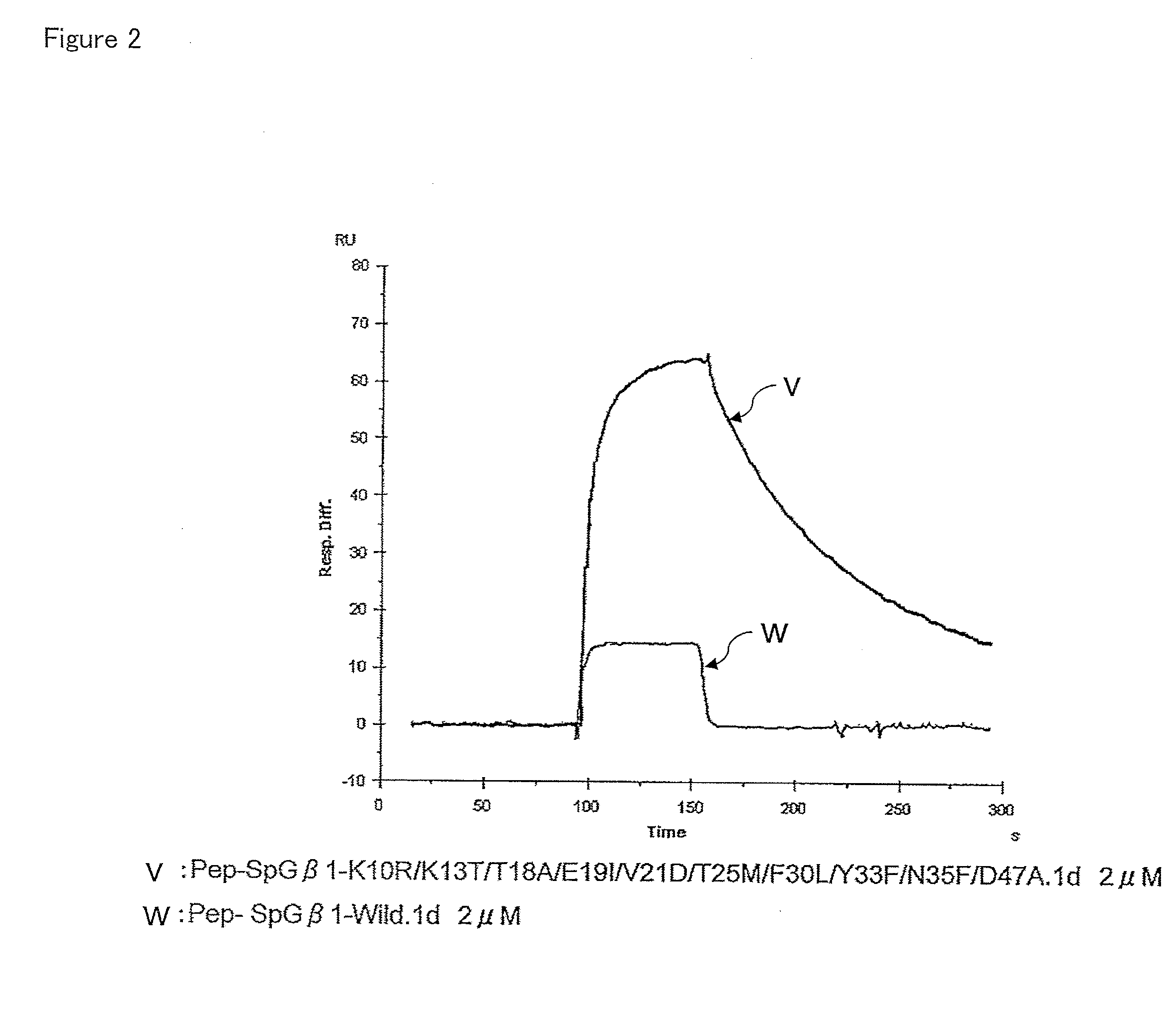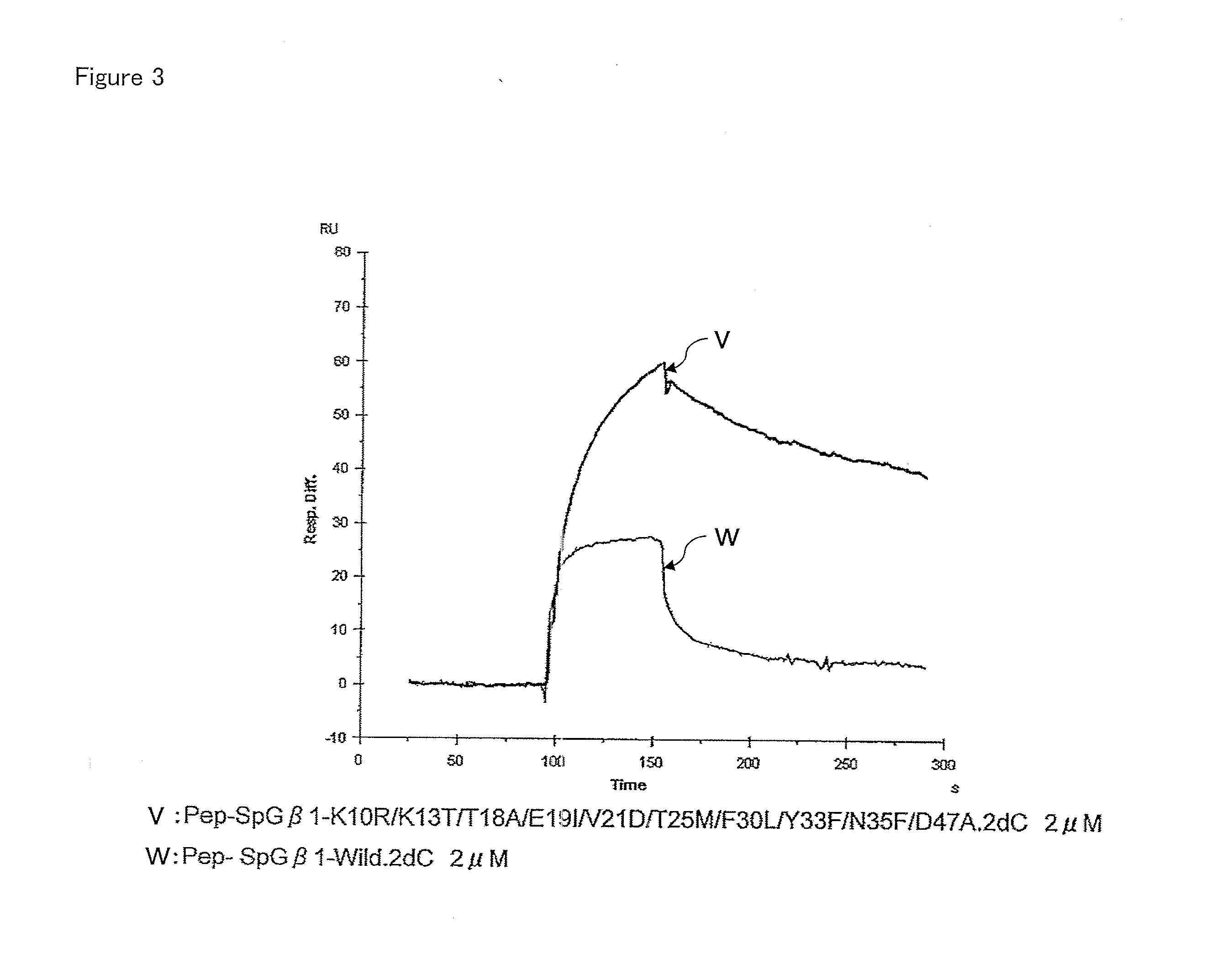Fab REGION-BINDING PEPTIDE
a region-binding peptide and fab technology, applied in the field of fab region-binding peptides, can solve the problems of low retention performance of fragment antibodies in spg affinity separation matrix products, use of such proteins as ligands in affinity separation matrix, etc., and achieve low cost production, efficient purification of antibody fragment medicines, and high affinity for fab regions
- Summary
- Abstract
- Description
- Claims
- Application Information
AI Technical Summary
Benefits of technology
Problems solved by technology
Method used
Image
Examples
example 1
Preparation of Various SpG-β1 Mutants
[0105](1) Preparation of Various SpG-β1 Mutant Expression Plasmids
[0106]The preparation of expression plasmids will be described by taking the wild-type SpG-β1 as an example. A base sequence (SEQ ID NO: 3) encoding the peptide was constructed by reverse translation from the amino acid sequence of the wild-type SpG-β1 (SEQ ID NO: 1). Subsequently, the method for producing the expression plasmid is shown in FIG. 1. A DNA encoding the wild-type SpG-β1 was prepared so that two kinds of double-stranded DNAs (f1 and f2) having the same restriction enzyme site were connected together. The resultant DNA was introduced into the multiple cloning site of the expression vector. Actually, the encoding DNA preparation and the vector incorporation were simultaneously performed by three-fragment ligation for connecting two kinds of double-stranded DNAs and three kinds of double-stranded DNAs of the expression vector. In preparation of two kinds of double-strande...
example 2
(1) Preparation of Fab Fragment Derived from IgG (IgG-Fab)
[0115]The Fab fragment was prepared by cleaving a humanized monoclonal IgG formulation as a starting material into a Fab fragment and an Fc fragment by papain, and separating and purifying only the Fab fragment. Shown herein is a method for preparing an IgG-Fab derived from anti-Her2 monoclonal antibody (generic name: Trastuzumab). Basically, another IgG-Fab such as an IgG-Fab derived from anti-TNFα monoclonal antibody (generic name: adalimumab) was also prepared in the same manner as described above.
[0116]Specifically, a humanized monoclonal IgG formulation (Herceptin, manufactured by Chugai Pharmaceutical Co., Ltd., in the case of anti-Her2 monoclonal antibody) was dissolved in a papain digestion buffer (0.1 M AcOH—AcONa, 2 mM EDTA, 1 mM cysteine, pH 5.5). Papain immobilized agarose: Papain Agarose from papaya latex (manufactured by Sigma) was added to the solution and the mixture was incubated at 37° C. for about 8 hours w...
example 3
[0120]The affinity of the SpG-β1 mutant for the IgG-Fab was measured in the same manner as in the experiment of Example 2. With respect to IgG-Fab, regarding the result observed in one type of IgG-Fab in the experiment of Example 2, the almost same tendency was found in another kind of IgG-Fab. The experiment was thus performed on just one type. The results are shown in Table 2.
TABLE 2anti-TNFα antibody-FabSEQ ID NOs:konkoffKAamino acidbase×104×10−2×105Vs.SpG mutantsequencesequenceM−1ss−1M−1Wildwild-type137.632.043.7—K13T / F30L / D36G212213.900.6023.16.2K13T / E19I / F30L / Y33F / V39I / D47H23247.940.3920.65.5K13T / V21I / A23T / F30L / E42L25268.500.5914.43.9K13T / E19I / K28R / F30L / Y33F27288.550.4220.25.4K13S / E19I / F30L293013.700.6222.36.0K13T / E19I / A23D / V39L31328.430.6213.63.6K13T / E19I / K28N / F30L / D40V333410.800.7614.33.8K13T / E19I / E27D / F30L / K31R353615.000.5527.47.3K13T / E19I / V21N / K28I / F30L373821.400.7130.18.1K13T / E19I / K28N / E42K394013.701.2411.03.0K13T / E19I / Y33F / N35Y / V39L41429.050.4918.75.0K13T / E19I / F30L / D47N4...
PUM
 Login to View More
Login to View More Abstract
Description
Claims
Application Information
 Login to View More
Login to View More - R&D
- Intellectual Property
- Life Sciences
- Materials
- Tech Scout
- Unparalleled Data Quality
- Higher Quality Content
- 60% Fewer Hallucinations
Browse by: Latest US Patents, China's latest patents, Technical Efficacy Thesaurus, Application Domain, Technology Topic, Popular Technical Reports.
© 2025 PatSnap. All rights reserved.Legal|Privacy policy|Modern Slavery Act Transparency Statement|Sitemap|About US| Contact US: help@patsnap.com



